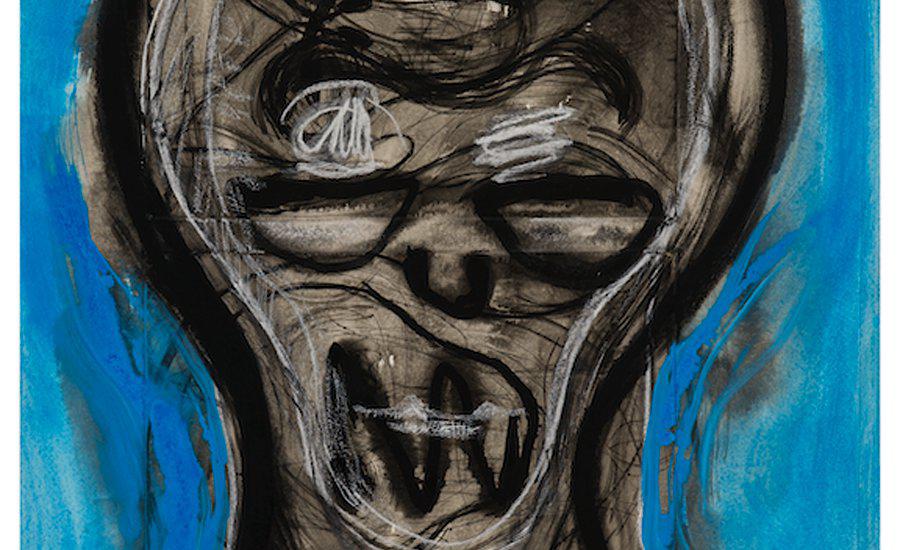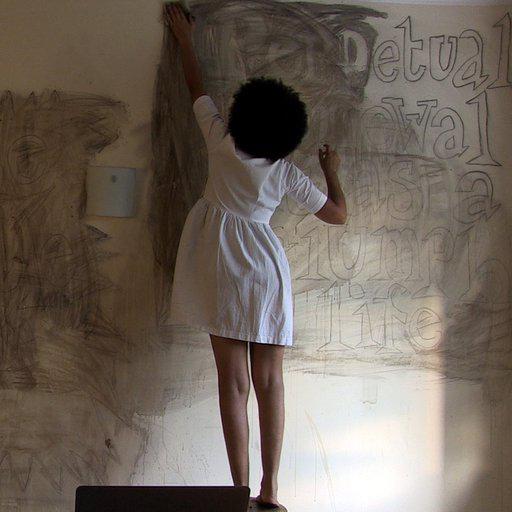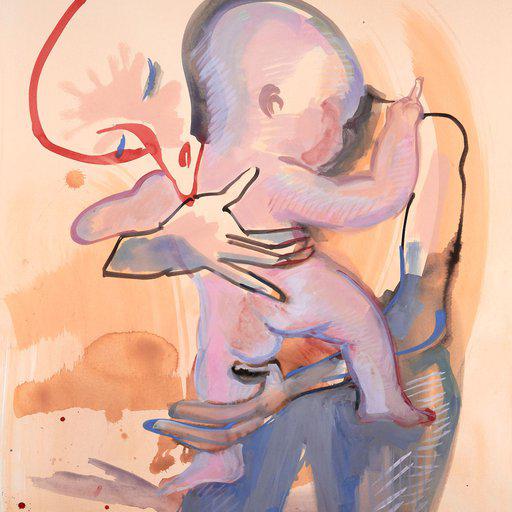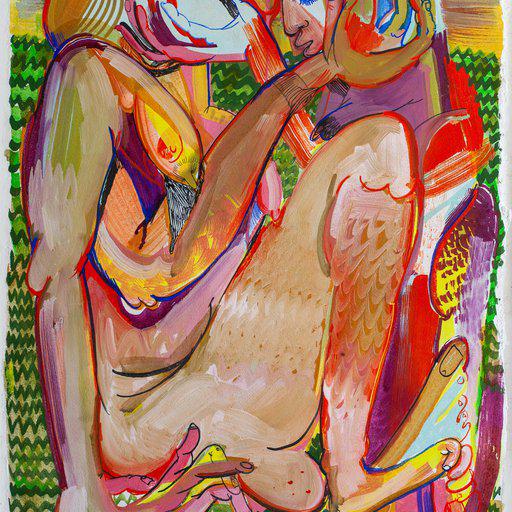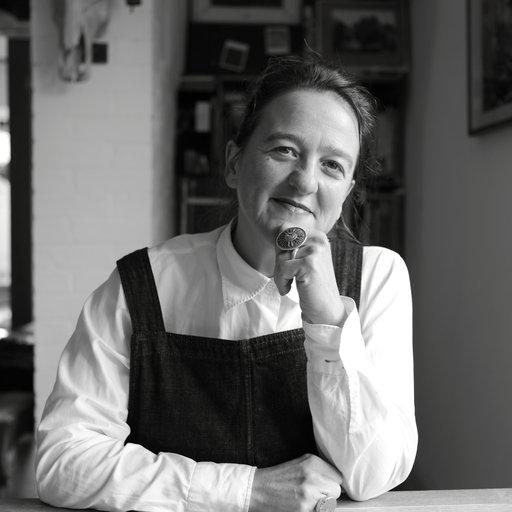What would the missing link between the classical sculptures of ancient Greece, and the monster movie creations of contemporary sci-fi look like? A number of beautiful, engaging responses can be found in the work of the brilliant contemporary Pakistani-American artist Huma Bhabha.
Born in Karachi in 1962, Bhahbha studied at the Rhode Island School of Design, then at Columbia University. She lived for a while in New York City, before heading a little further up the Hudson Valley, to settle in Poughkeepsie, NY, where she continues to create figurative sculptures, collages, works on paper and prints, that seem to reference both real, long-since collapsed civilizations, and fantasy worlds in such an intense fashion, that you’re left wondering whether to reach for explorer binoculars or 3D glasses.
Bhabha herself is in no doubt as her feelings towards the grotesque. “For me ghastly and horror mean sophisticated and beautiful,” she says.
Untitled, 2021, Bhabha's new Artspace & Phaidon edition in association with MOCA LA, is an example of the haunted human figures, dominant in her work, that hover between abstraction and figuration, monumentality and entropy.
“It is an image that very much reflects what I have been doing in my two-dimensional works in recent years,” she says.
Created exclusively to benefit MOCA through a unique Artspace editions initiative, proceeds from the sale of Untitled, 2021 will support programming at the museum for the coming year.
Currently the subject of two excellent shows at David Kordansky gallery at Art Basel Hong Kong and Salon 94 in New York, Bhabha's artistic ambitions were seeded in her infancy. The artist’s mother was a talented painter, and an inspiring figure. The Bhabha family library also contained a wealth of artistic stimulation, especially when it came to antiquity. “My favorite was a book on Greek statuary and vases,” the artist recalls.
Nevertheless, there were clear, contemporary influences on her early artistic sensibilities, some of which reached her via the cinema screen. “The movie Scanners by David Cronenberg was an eye opener for me in terms of how I wanted to think about my sculpture,” she explains. “Horror and science fiction allowed me to use my imagination and be original in an unconventional way.”
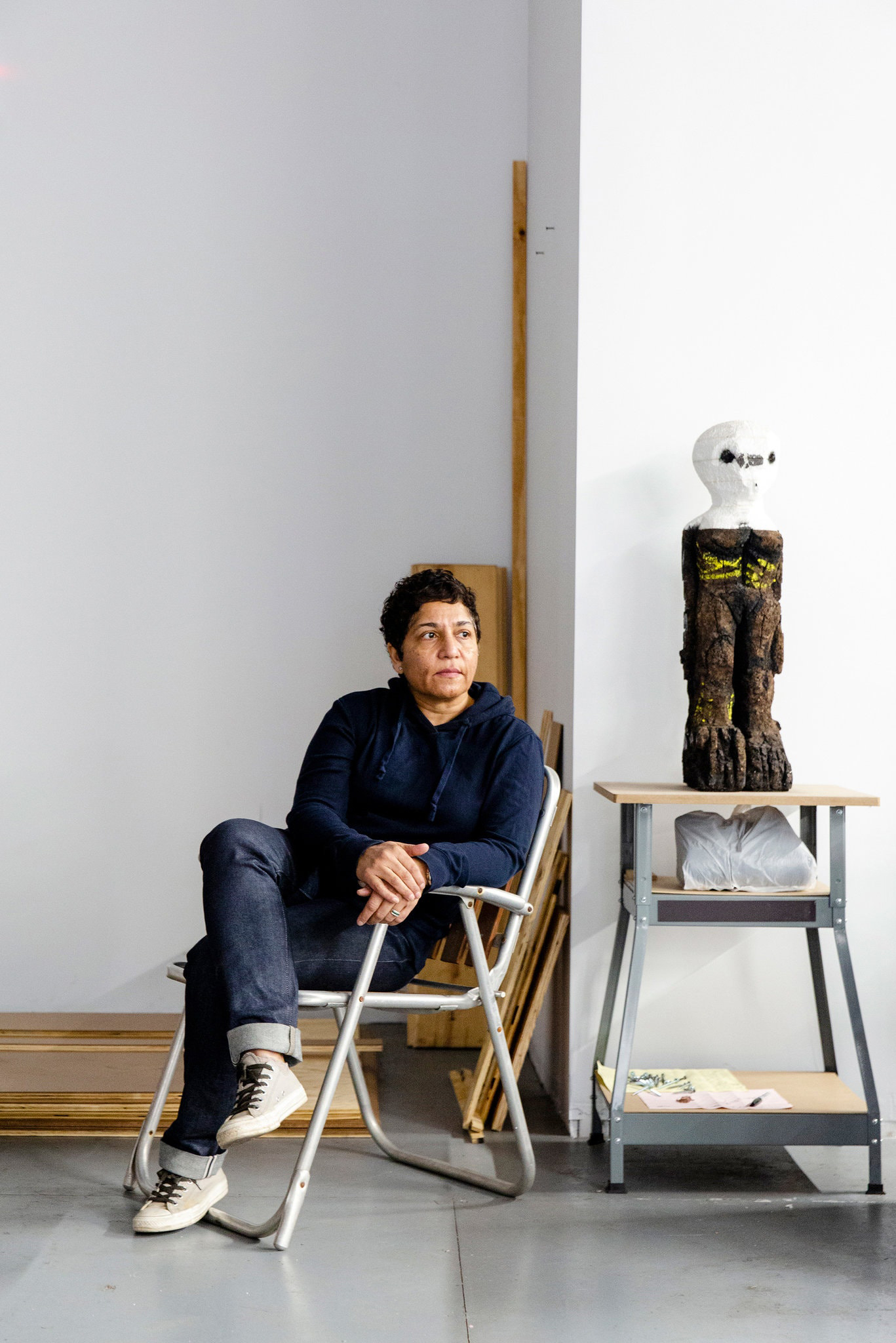
Bhabha gathered practical skills working as a taxidermist, and still credits the job with teaching her the skills to create armatures for her sculptures,” which are as important as the finished sculpture itself,” she adds. She picked a sense of “What to do and what not to do,” she says, assisting the Venezuelan-born Jewish artist Meyer Vaisman.
Meanwhile, guiding figures from the early Modernist period, such as Man Ray and László Moholy-Nagy, continue to guide her. “To be as radical and experiment on the level of Moholy-Nagy and Man Ray is a lifelong goal and an inspiration,” she says. “I like to think of my sculptures as characters with strong personalities.”
With an acclaimed 2018 rooftop commission from The Met, high-profile acquisitions from the Hirshhorn, and secure positions in the permanent collections of The Tate, The Whitney and MoMA, you would be forgiven for thinking Bhabha has little more to prove.
On the contrary, the artist–best known for her three-dimensional work–appears to be showing renewed interest in prints, collages and works on paper. “I think my drawings and sculpture strongly inform each other,” she says, adding, “I love portraiture. It all depends on what is required to be done to make the work beautiful and intense. Limits are only set by us, not the materials which can make a lot more possible.”
The artist hopes her new Artspace print, Untitled , 2021 will shed light on this side of her practice. “It is an image that very much reflects what I have been doing in my two-dimensional works in recent years,” she says.
Bhabha studied printmaking in art school and although she did not continue as a printmaker she retains solid understanding of the process, and has worked with master printers on three previous editions: Reconstructions, The Unsubs and Leochicospeedy.
This most recent print also reflects Bhabha’s enduring interest in collaging and layering, techniques on show in the artist’s 2020 exhibition at the Baltic gallery in Gateshead, UK.
“Each layer and each mark is a story,” she explains, “for me it is my process and the more layers the more complexed, complicated and intense the work becomes.”
The Artspace print image too consists of contrasting media. “I did not use any collage in this image but it is layered,” she explains, “because I made the original drawing on a black and white proof for a print so the marks and tones of the print exist in the background and create space and then I painted and drew over that.”
These accretions reflect both Bhabha's undying desire to take risks and experiment, as well as her sophisticated grasp of the beautifully ghastly. It’s portraiture that, while drawing on the future and the past remains thoroughly contemporary.
You can buy Huma Bhabha's new print here and view more of her works here .
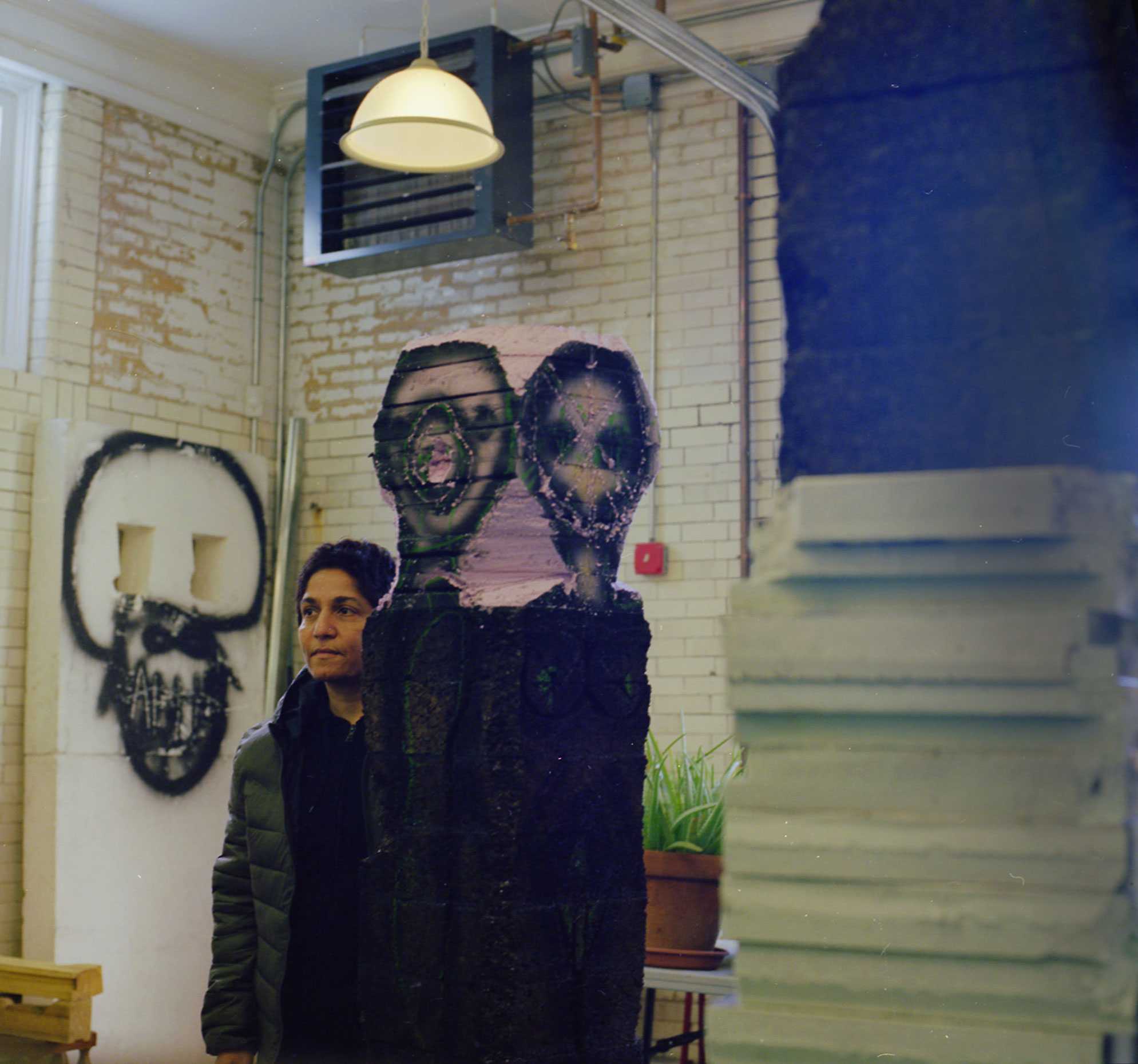 Huma Bhabha - photo by
Elyse Benenson
Huma Bhabha - photo by
Elyse Benenson











